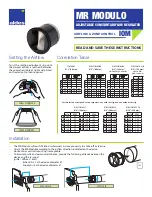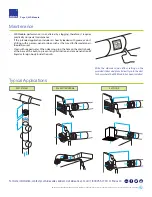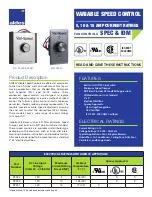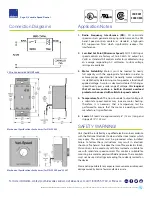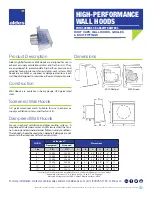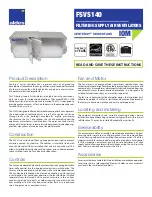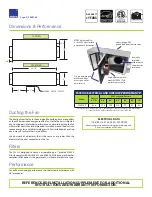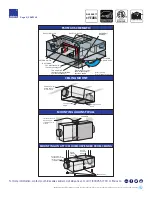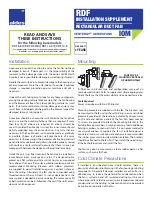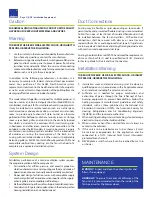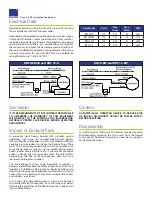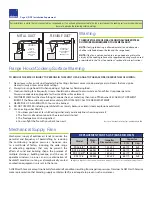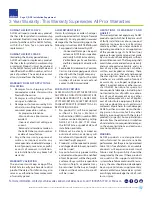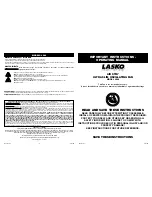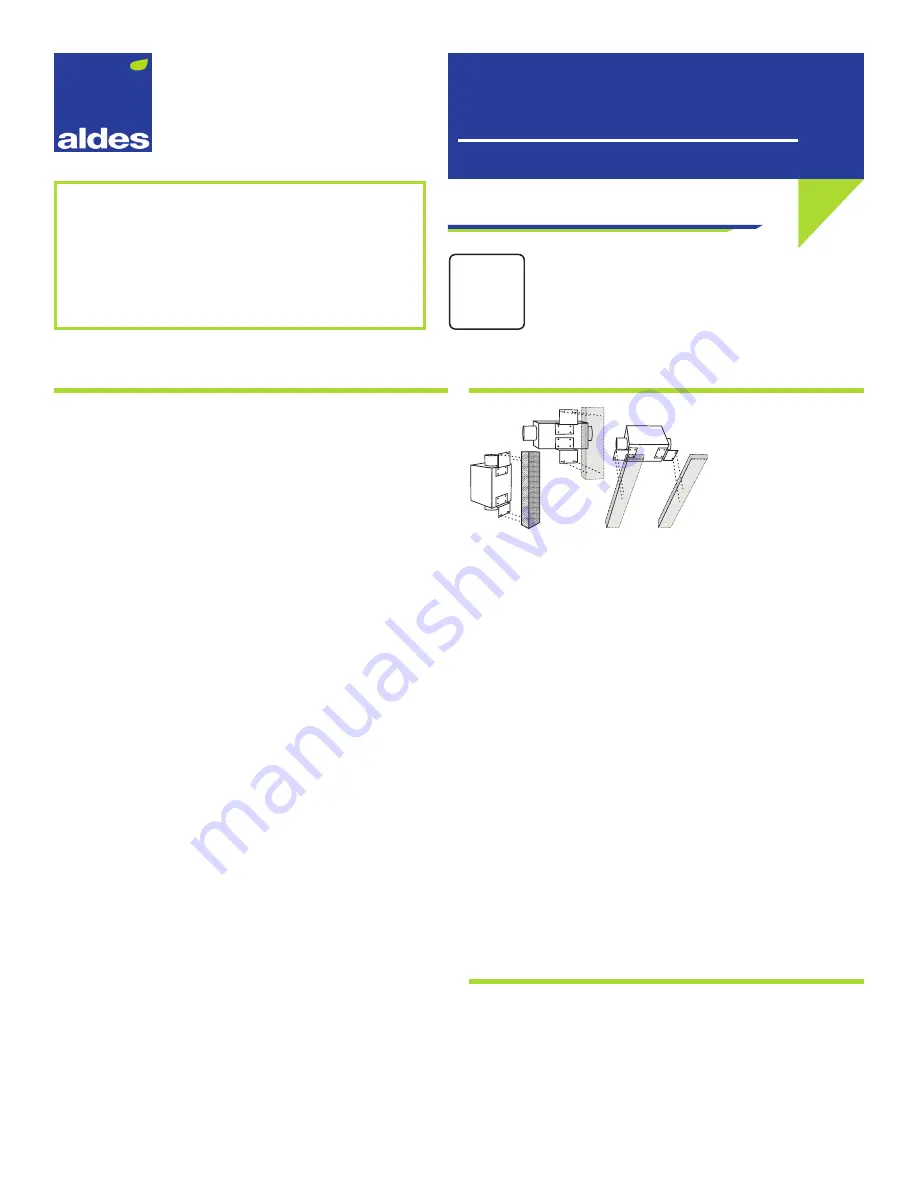
Installation
Upon receipt, inspect the carton to ensure the fan has not been
damaged in transit. If damaged, it is the responsibility of the
recipient to file a damage claim with the carrier. ALDES North
America is not responsible for damage incurred during shipment.
Handle the unit with care to prevent damage to the housing and
other components. Store the unit indoors if possible. If outdoor
storage is required, protection against moisture and dirt is
necessary.
Unpack the unit, taking care to look for any loose components
among the packing material. Make certain that the fan housing
and the blower are free of any loose packing material or small
parts. If not removed before startup, damage and injury may
result from solid objects discharged by the blower. Inspect for
damaged, loose, or missing parts.
A location should be chosen that will minimize the length of
duct runs and the number of elbows that are required. If more
than four (4) 90
o
elbows are required, 45
o
elbows should be
used. If insulated flexible duct is used, the inner sleeve should
be fully expanded over the entire duct run. Any turns that are
necessary in the flexible duct run should be made as gradually
as possible. Choose roof and/or wall caps that are of a more
open, less restrictive design. The perimeter of all ceiling and wall
penetrations for ductwork and grille(s) should be properly sealed
with caulk or a similar material to ensure that there is not an air
leakage path between the device and the wall and/or ceiling.
Install the unit in its final location. The fan may be installed in
a mechanical room, crawl space, or attic. It is designed to be
placed on a flat surface, against a wall or trusses, or suspended
from above. If set on a flat surface, vibration-isolation pads are
recommended. Mounting brackets with rubber grommets
are supplied to permit installation against a vertical surface or
from the ceiling. Alternately, the fan may be suspended using
threaded rods or chains. At least 12 inches clearance from the
access panel is needed to permit servicing the motor. Loose fill
or batt insulation can be installed over the unit if the unit’s access
doors can still be opened.
VENTERGY
®
SERIES FANS
RECTANGULAR DUCT FAN
RDF
INSTALLATION SUPPLEMENT
Mounting
(Differences in bracket type and configuration may exist on
some derived models. Refer to supplement where appropriate).
Orient the fan so that the access door can be opened for service.
Tools Required:
Power screwdriver with No. 2 Phillips bit.
Mounting brackets are supplied with the fan. The brackets may
be mounted to the fan using the self-drilling screws and rubber
grommets provided, at the locations indicated by dimple marks
on the side and bottom panels of the fan. Pan head number
10 screws are provided to attach the mounting bracket to the
building framing members. It may be necessary to add additional
framing members to span wall studs. It is not recommended to
use drywall anchors to support the fan. If installed against a
concrete or masonry wall, concrete anchors are recommended.
The rubber grommets provide vibration isolation. The brackets
should be attached to the fan first. Then install the wood screws
at the keyhole locations and install the fan.
The fan may also be mounted on a foam rubber pad on a flat
surface, such as an attic floor.
Cold Climate Precautions
If installed in an unheated space in cold climates, there is a
possibility of condensation forming in the fan housing or ducting
components. A backdraft damper installed at each grille is an
effective way to reduce the potential for condensation when
the fan is cycled on and off. Insulated ducting must be used
where exposed to cold attic or crawl space temperatures to avoid
condensation in the ducting. Condensation can also be avoided
by continuous operation of the fan.
IOM
READ AND SAVE
THESE INSTRUCTIONS
For the following base models:
RDF 8-8IP, RDF 8-8MAX, RDF 12-8IP, RDF 12-8
(See supplemental instructions for derived models withduct adapters,
manifolds, etc., as appropriate for your particular model.)
WARRANTY
3
YEARS
FANS MAY BE
MOUNTED VERTICALLY
OR HORIZONTALLY


